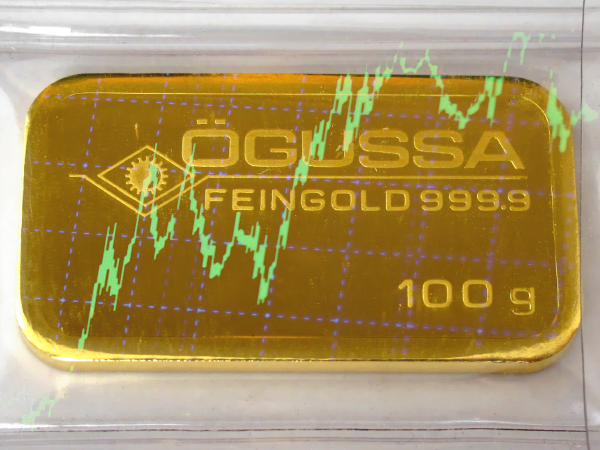
Fundamentals may be important, but one writer argues that an asset’s narrative often drives price – and he thinks gold’s current narrative is looking very rosy.
This year, gold and the U.S. dollar have moved up in tandem, which many have found to be a curious occurrence, as the two are supposed to be inversely correlated. To FX Markets’ Arkadiusz Sieron, however, the occurrence was not strange at all. As Sieron points out, in the absence of certainty, the markets will always be susceptible to sticking to whichever narrative is trending in an attempt to predict the unpredictable.
Mervyn King, a former Bank of England governor, wrote about how narratives can often completely dictate the flow of the global economy and the valuations of assets. As a particularly prominent example, King used the 2008 financial crisis to highlight how market sentiment was swayed seemingly overnight. As King notes, the buildup to the 2008 crisis was based on the narrative that excess borrowing and the housing bubble weren’t that big of an issue. As soon as the narrative changed and the status quo was no longer sustainable, a global recession broke out and asset prices were reinvented.
Despite its strong fundamentals that have held up for centuries, Sieron points out that gold is just as susceptible to market sentiment as other assets, if not more so. While the overall supply of the metal might be on a worrying decline and the global economy rests on shaky foundations, investors can still opt to favor the trending sentiment instead of hard data and ride the narrative for years on end.
Sieron singles out four main examples of how narratives dominated the gold market irrespective of fundamentals. First came concerns about inflation in the 70s that brought the price to above $600, followed by the notion that gold is a dated investment and should be pushed aside in favor of newer and better options, which went on throughout the 80s and 90s and brought the price back to nearly $200. By the end of the 20th century, however, it became clear that things weren’t nearly as rosy as they were portrayed. Concerns over mounting debt and a weakening dollar slowly pushed gold’s price up over the following decade, culminating in the metal’s all-time high of over $1,900 in 2011. From there, another narrative was ushered in, one of the crisis being behind us and the economic recovery being underway, with gold prices once again moving downwards in response.
A little less than a decade removed from 2011, however, Sieron believes that the narrative of optimism has nearly extinguished. Sieron views the metal’s spike to six-year highs this summer as the turning point of a new market trend, as investors once again grow wary of the various question marks and red flags. Yet this time, things could be different. While the era of negative yields and recessionary concerns brought in another bull market for gold, there is no way to swipe away the specter of record-high federal deficit and global debt, both issues for which there are no real solutions. This, coupled with signs that the U.S. dollar is losing its grip on the status of a reserve currency for the first time in decades, leads Sieron to believe that the newly-started bull market in gold could run indefinitely.

Leave a Reply